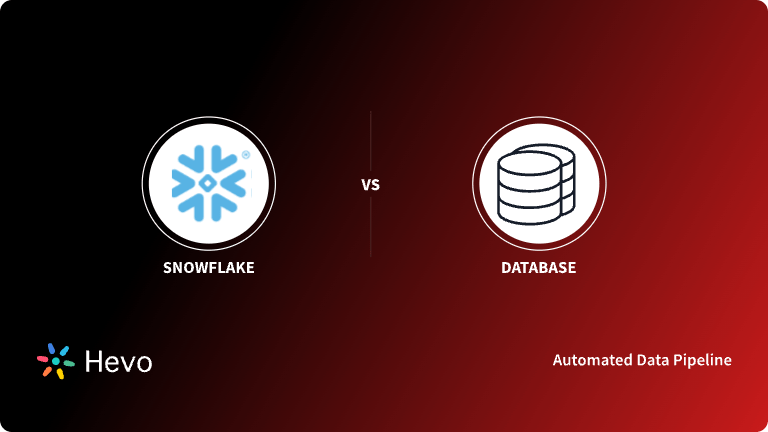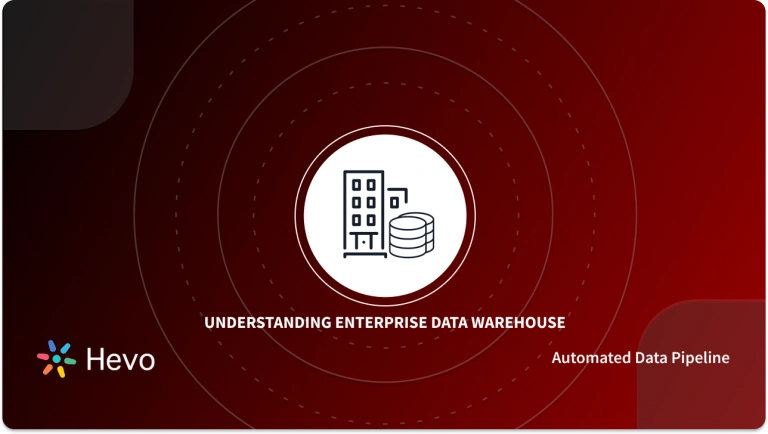OLAP is an acronym for On-Line Analytical Processing. OLAP is a software technology classification that allows analysts, managers, and executives to get insight into information through fast, consistent, interactive access to data that has been transformed from raw data to reflect the true dimensionality of the company as perceived by the clients.
OLAP is based on a pretty straightforward notion. Most queries that are generally difficult to execute over tabular databases, such as aggregation, joining, and grouping, are pre-calculated.
These queries are calculated as part of the OLAP cube’s ‘building’ or ‘processing’ operation. This process takes place overnight, and data will have been updated by the time end users arrive at work.
Table of Contents
What is OLAP?
- OLAP (Online Analytical Processing) is a computer approach that allows users to extract and query data quickly and selectively to examine it from many perspectives.
- Trend Analysis, Financial Reporting, Sales Forecasting, Budgeting, and other planning tasks are frequently aided by OLAP Business Intelligence queries.
- For example, a user can ask for data to be analyzed to see a spreadsheet showing all of a company’s beach ball products sold in Florida in July, compare revenue figures with those for the same products in September, and then compare other product sales in Florida during the same time.
Applications of OLAP
Here are several OLAP Analytics Operations:
- Roll-Up: Roll-U6,l6p is a technique for reducing dimensions by combining similar data into a single variable. For example, sales from several cities throughout the world can be combined to form a country.
- Drill-Down: Drill-Down is the polar opposite of Roll-Up, which separates data for granular insights. For example, a financial institution’s sales performance can be examined every quarter.
- Slice and Dice: Slice and Dice help with granular data analysis, but from a different angle. For example, you can examine a company’s sales by different salespeople, which can then be evaluated further based on the things they sold.
- Pivot Table: Pivot Tables are used to summarise data and give an overall view of the relationship between two variables by rotating the axis of data. For example, using pivoting, salespeople can separate products for sale or vice versa.
Struggling to migrate your data? Hevo makes it a breeze with its user-friendly, no-code platform. Here’s how we simplify the process:
- Seamlessly pull data from HubSpot and over 150+ other sources with ease.
- Utilize drag-and-drop and custom Python script features to transform your data.
- Efficiently migrate data to a data warehouse, ensuring it’s ready for insightful analysis in Tableau.
Experience the simplicity of data integration with Hevo and see how Hevo helped fuel Cure.Fit’s drive for accurate analytics and unified data.
Get Started with Hevo for FreeWhen to use OLAP?
OLAP allows you to organize data in a multidimensional model that makes it simple for business users to comprehend and use the data in a business context, such as a budget.
OLAP is great for data mining, business intelligence, and complicated analytical calculations, as well as financial analysis, budgeting, and sales forecasting in corporate reporting.
The OLAP cube is at the heart of most OLAP databases, allowing you to swiftly query, report on, and analyze multidimensional data.
Types of OLAP Models
These are the different types of OLAP Models:
- Relational OLAP Models (ROLAP)
- Multidimensional OLAP Models (MOLAP)
- Hybrid OLAP Models (HOLAP)
- Other Types
1. Relational OLAP Models (ROLAP)
- ROLAP stands for Relational OLAP Model, a relational OLAP application.
- These are servers that sit between a relational back-end server and the user front-end tools.
- They save and manage warehouse data via a relational or extended-relational database management system, and they employ OLAP middleware to fill in the gaps.
- ROLAP models execute optimization for each DBMS back end, aggregate navigation logic implementation, and other tools and services.
- ROLAP systems mainly use data from relational databases, where the base data and dimension tables are stored as relational tables. This model also allows for multidimensional data analysis.
- This method works by modifying the data in a relational database to simulate the slicing and dicing functionality of standard OLAP. Each method of slicing and dicing is essentially the same as adding a “WHERE” clause to a SQL statement.
Advantages
- Can Handle Large Volumes of Information: The data size limitation of ROLAP technology depends on the data size of the underlying RDBMS. So, ROLAP itself does not restrict the data amount.
Disadvantages
- Performance may be Slow: Each ROLAP report is a SQL query (or multiple SQL queries) in a relational database, and the query time can be extended if the underlying data is substantial.
- SQL Functions Limit ROLAP Technology: SQL statements are used to query a relational database, and SQL statements do not meet all needs.
2. Multidimensional OLAP Models (MOLAP)
- MOLAP stands for Multidimensional OLAP Model, an application based on multidimensional DBMSs.
- The foundation of a MOLAP model is a native logical model that allows multidimensional data and operations directly. Data is physically stored in multidimensional arrays and accessed using positional algorithms.
- The scalability of ROLAP technology is generally higher than that of MOLAP technology.
- One of the key differences between MOLAP and ROLAP is that data is summarised and stored efficiently in a multidimensional cube rather than a relational database. Data is formatted into proprietary forms per the client’s reporting requirements in the MOLAP model, with computations pre-generated on the cubes.
Advantages
- Excellent Performance: MOLAP cubes are designed for quick data retrieval and are ideal for slicing and dicing activities.
- Can Conduct Sophisticated Calculations: When the cube is constructed, all evaluations are pre-generated. As a result, not only are complex calculations possible, but they also return rapidly.
Disadvantages
- It Can Only Handle a Certain Amount of Data: Because all calculations are done when the cube is produced, a vast quantity of data cannot be stored in the cube itself.
- Additional Investment is Required: Cube technology is usually proprietary and not already in use within the company. As a result, additional human and capital resources will likely be required to implement MOLAP technology.
3. Hybrid OLAP Models (HOLAP)
- HOLAP or Hybrid OLAP Model is an application that combines relational and multidimensional approaches.
- HOLAP combines MOLAP and ROLAP’s greatest characteristics into a single architecture. HOLAP systems store a larger amount of detailed data in relational tables, while aggregations are saved in pre-calculated cubes.
- For defined data, HOLAP can drill down from the cube to the relational tables. A hybrid OLAP model is provided by Microsoft SQL Server 2000.
Advantages
- HOLAP combines the advantages of MOLAP and ROLAP.
- It allows quick access at all aggregate levels.
- HOLAP reduces disc space requirements by storing only the aggregate data on the OLAP models while keeping the detail records in the relational database. As a result, no duplicate copy of the detail record is kept.
Disadvantages
- HOLAP architecture is somewhat complex because it supports both MOLAP and ROLAP models.
Other Types
Here is a compiled list of some of the OLAP industry’s lesser-known brands.
- Web-Enabled OLAP Models (WOLAP)
- Desktop OLAP Models (DOLAP)
- Mobile OLAP Models (MOLAP)
- Spatial OLAP Models (SOLAP)
1. Web-Enabled OLAP Models (WOLAP)
- WOLAP refers to an OLAP program that may be accessed through a web browser. WOLAP is a three-tiered architecture that consists of three components: a client, middleware, and database server, as opposed to standard client/server OLAP systems.
- One example of this type of model in HTML solution is an OLAP tool that allows the user to execute some specific OLAP queries or reports from a browser and no other functionality would be available.
2. Desktop OLAP Models (DOLAP)
- DOLAP (Desktop OLAP) Model allows a user to download a piece of data from a database or source and work with it locally or on their desktop.
3. Mobile OLAP Models (MOLAP)
- MOLAP or Mobile OLAP (MOLAP) allows users to utilize their mobile devices to access and work on OLAP data and applications.
4. Spatial OLAP Models (SOLAP)
- SOLAP (Spatial OLAP) combines the capabilities of both GIS and OLAP into a single user interface. It helps with both spatial and non-spatial data management.
- Spatial OLAP, for example, can be used to analyze regional weather trends. Assume there are approximately 3,000 weather probes strewn across British Columbia (BC), each recording daily temperature and precipitation for a small area and transferring data to a provincial weather station.
Challenges of OLAP Models
Some disadvantages of OLAP Models are:
- Pre-modeling is required.
- High reliance on IT.
- Inadequate calculation capabilities.
- Sluggish reaction time.
- Lack of interactive analysis ability.
- The model’s abstraction prevents business workers from freely analyzing.
- Traditional OLAP solutions have a high risk of failure.
Conclusion
- Many Business Intelligence (BI) solutions use OLAP (Online Analytical Processing), a sophisticated technology that identifies data, provides report viewing capabilities, performs complicated analytical calculations, and predicts scenarios, budgets, and forecasts.
- To understand the key differences between OLTP and OLAP, explore our detailed comparison of the two in our blog.
- It operates by collecting data from a variety of sources (such as a spreadsheet, video, XML, and so on) and storing it in data warehouses, which are then cleansed and structured into data cubes on which the user’s queries can be executed.
- Extracting complex data from a diverse set of data sources can be a challenging task and this is where Hevo saves the day! Hevo offers a faster way to move data from Databases or SaaS applications into your Data Warehouse to be visualized in a BI tool. Hevo is fully automated and hence does not require you to code.
Sign Up for a 14-day free trial and experience the feature-rich Hevo suite first hand.
You can also have a look at our unbeatable pricing that will help you choose the right plan for your business needs!
FAQs about OLAP Models
1. What are OLAP data models?
OLAP (Online Analytical Processing) data models are designed specifically for analytical queries and reporting in data warehouses or databases optimized for decision support.
2. What is an example of OLAP?
An example of OLAP (Online Analytical Processing) is a sales analysis dashboard that allows users to slice and dice sales data across different dimensions, such as time, product category, and region.
3. Is Snowflake OLAP or OLTP?
Snowflake is primarily designed for OLAP (Online Analytical Processing) workloads rather than OLTP (Online Transaction Processing).












